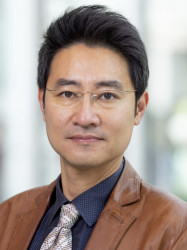BibTex format
@inproceedings{Jing:2019:10.1016/j.egypro.2019.01.232,
author = {Jing, H and Wang, Y and Lee, PH and Leu, SY},
doi = {10.1016/j.egypro.2019.01.232},
pages = {926--933},
title = {Substrate-related features to maximize bioenergy potential of chemical enhanced primary treatment sludge},
url = {http://dx.doi.org/10.1016/j.egypro.2019.01.232},
year = {2019}
}

